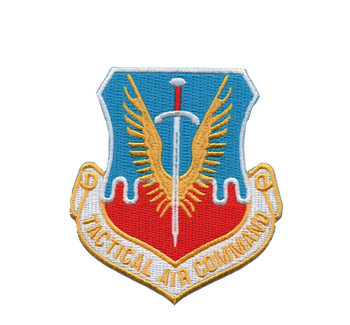Description
91st Civil Affairs Battalion (U.S. Army) 3.0" x 3.06" Embroidered Patch with Iron-On Backing
Superior Materials: Made with premium polyester thread and durable twill fabric, ensuring long-lasting color and strength.
Advanced Embroidery Technology: Crafted using the most advanced embroidery machinery, guaranteeing intricate detail, sharp lines, and consistent quality every time.
Easy Iron-On Application: Features a heat-activated adhesive backing for quick, no-sew attachment. Simply position, iron, and press for a secure bond.
Versatile Use: Perfect for personalizing jackets, backpacks, uniforms, or any fabric surface that needs a touch of personality.
Durable and Washable: Designed to withstand everyday wear and occasional washing without fading or fraying.
3.5" x 3.5" Embroidered Patch with Iron-On Backing
Superior Materials: Made with premium polyester thread and durable twill fabric, ensuring long-lasting color and strength.
Advanced Embroidery Technology: Crafted using the most advanced embroidery machinery, guaranteeing intricate detail, sharp lines, and consistent quality every time.
Easy Iron-On Application: Features a heat-activated adhesive backing for quick, no-sew attachment. Simply position, iron, and press for a secure bond.
Versatile Use: Perfect for personalizing jackets, backpacks, uniforms, or any fabric surface that needs a touch of personality.
Durable and Washable: Designed to withstand everyday wear and occasional washing without fading or fraying.
Formation & Origins Established March 21, 1946, in the aftermath of World War II. Created to provide U.S. with long-range nuclear strike capability during Cold War. Patch features armored mailed fist clutching olive branch (peace) and lightning bolts (power) on blue background. Design created by Staff Sergeant R.T. Barnes, approved by General Curtis LeMay.
Notable Commanders General George C. Kenney served as first commander. General Curtis LeMay defined the organization during critical early Cold War period (1948-1957), creating its distinctive culture and capabilities. Other notable leaders included General Thomas S. Power, General John D. Ryan, and General Russell E. Dougherty. Final commander was General George Lee Butler before 1992 inactivation.
Major Campaigns/Operations Operation Chrome Dome maintained continuous airborne nuclear alert. Cuban Missile Crisis response included massive airborne alert (1962). Conducted Operation Arc Light B-52 bombing missions in Vietnam. Supported Operation Linebacker during Vietnam War. Maintained continuous ground alert status for decades. Participated in Yom Kippur War airlift (1973). Critical role in Operation El Dorado Canyon against Libya (1986).
Specialized Role/Equipment Operated strategic bomber fleet including B-29, B-36, B-47, B-52, and B-1 aircraft. Controlled land-based ICBM force (Atlas, Titan, Minuteman, Peacekeeper missiles). Operated aerial refueling tanker fleet. Maintained nuclear triad's air and land components. Pioneered aerial refueling techniques and strategic reconnaissance operations.
Acts of Heroism During 1966 B-52 mid-air collision, Captain Charles Andres ordered crew to eject but stayed aboard to steer crippled aircraft away from Spanish village. In 1964, Major Robert Moore and crew spent 19 hours in air during emergency mission to rescue downed pilot. SAC crews flew into harm's way during Cold War reconnaissance missions, with several aircraft shot down. During 1980 missile silo accident in Arkansas, two airmen sacrificed their lives attempting to vent dangerous fuel.
Legacy & Notable Achievements SAC motto "Peace is Our Profession" became iconic Cold War symbol. Maintained unbroken nuclear deterrence for 46 years. Developed first true global strike capability. Pioneered numerous aviation technologies and procedures. Set multiple world records for distance and endurance flights. Excellence standards known as "SAC mentality" influenced entire Air Force culture. Helped prevent nuclear war through credible deterrence. Functions now performed by Air Force Global Strike Command. Patch remains among most recognized military emblems, representing American resolve during decades-long Cold War standoff.









